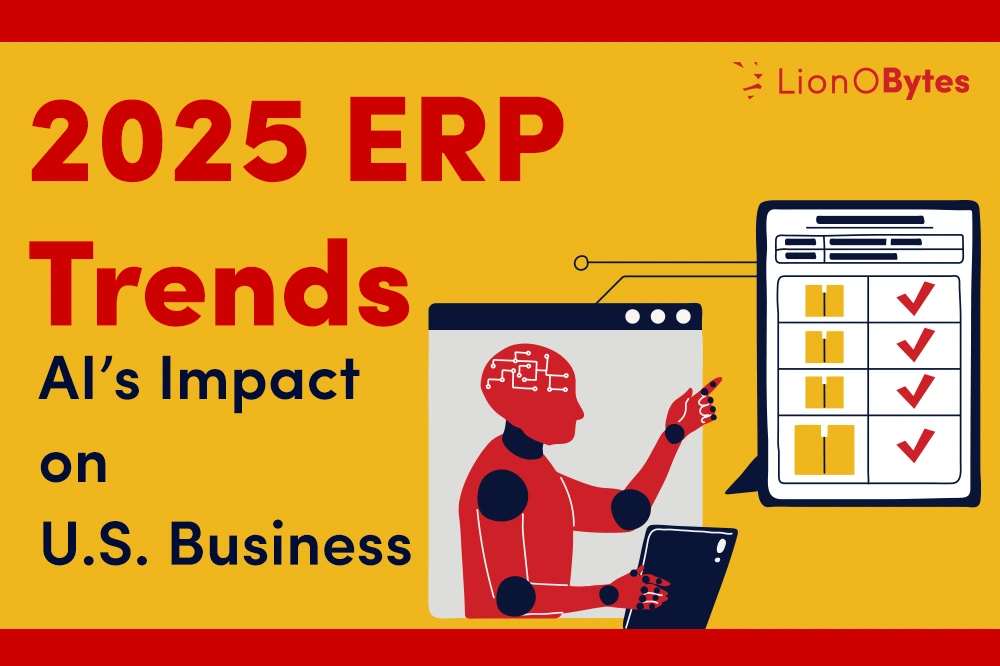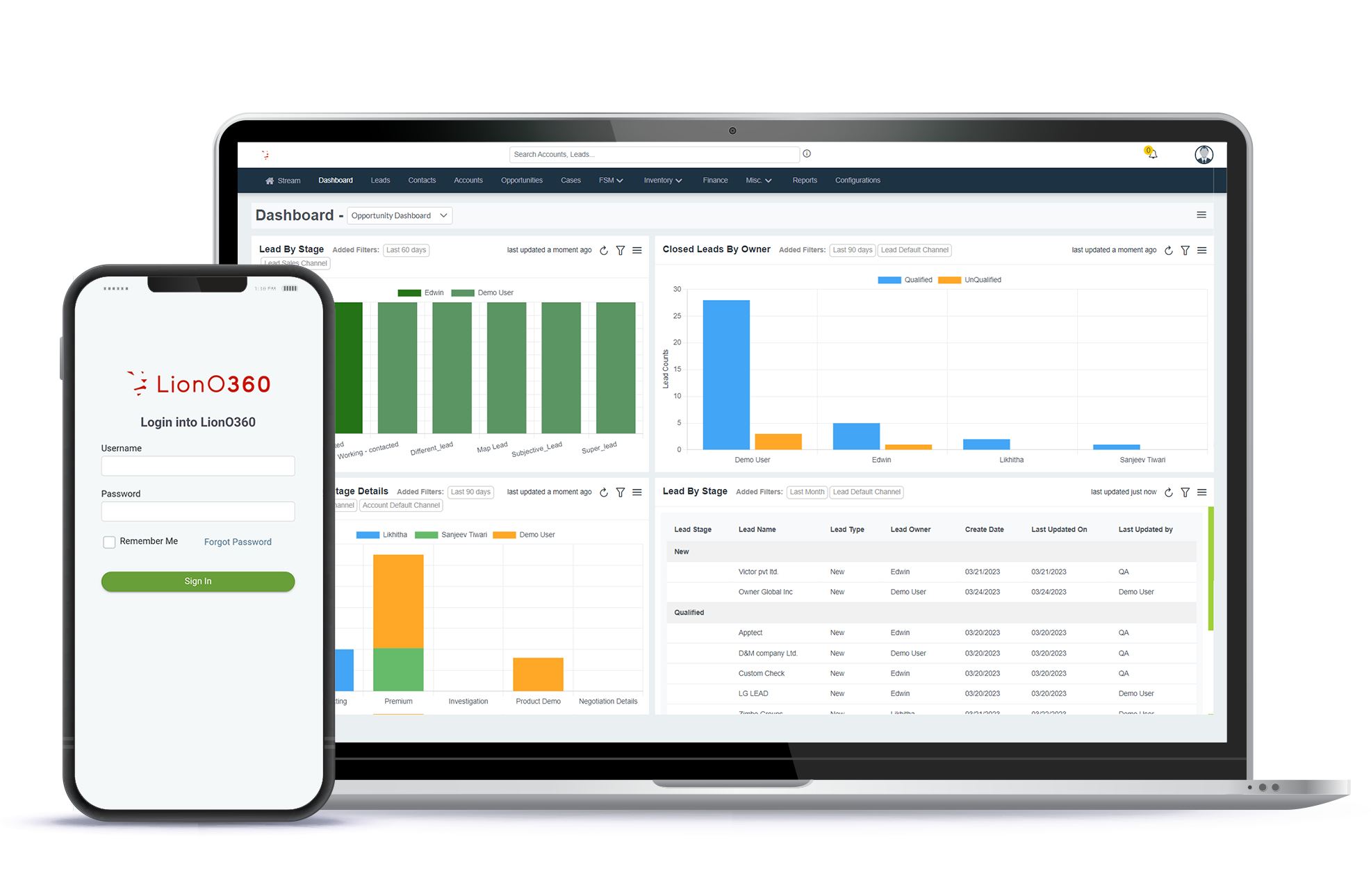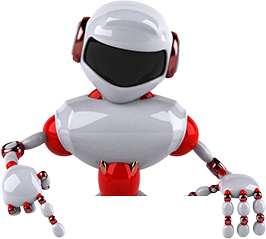
Enterprise Resources (ERP) has been the backbone of service-based business processes. What’s different in 2025 is that AI is now deeply embedded in ERPs. The AI market in the ERP sector is projected to reach approximately $46.5 billion by 2033, up from $4.5 billion in 2023.
Now, the new ERP trends are revolutionizing the business scenario. Companies in the USA, especially those rising or competing globally, are staying ahead of these trends. Here, in this blog, we are sharing the top seven trends that are enhancing business growth.
Agentic AI
Agentic AI refers to AI systems that go beyond suggestions with self-initiatives. It can monitor sales, inventory, supply chain, and detect issues or opportunities. Sometimes it takes action with minimal or zero human effort. In ERP, this means workflows that trigger automatically without waiting for manual input.
Why it matters:
- Speeds decision-making.
- Reduces errors and delays.
- Enables staff to focus on strategic tasks instead of routine operations.
Predictive Analysis & Demand Forecasting
Using AI to analyze historical data, external factors, and real-time signals to forecast demand, spot supply chain risks, and optimize inventory levels.
Why it matters:
- Reduces inventory carrying costs.
- Lowers stockouts and excess inventory.
- Enhances cash flow and operational planning.
Composable & Modular ERP Architectures
Rather than monolithic ERP systems that encompass all modules in one block, composable or modular ERPs enable businesses to plug in, and swap modules (such as finance, HR, inventory, and field service) as needed. APIs and microservices make this flexible.
Why it matters:
- Flexibility to adapt to changing business needs.
- Avoid paying for features you don’t need.
- Easier upgrades, faster deployment.
U.S. Business impact:
Companies with changing product lines, seasonal operations, or those expanding into new markets are increasingly favoring modular ERPs, which allow them to add or remove capabilities without overhauling entire systems.
Real-Time Data, Edge Analytics & IoT Integration
ERP systems are increasingly ingesting data from IoT sensors, devices, and external real-time signal sources. Edge computing (processing near the data source) is used to reduce latency. This supports real-time dashboards, alerts, predictive maintenance, and live monitoring of supply chains, manufacturing equipment, and more.
Why it matters:
- Reducing downtime.
- Real-time visibility into supply chain/trucks, etc.
- Faster anomaly detection, quicker response times.
Hyper automation of Business Processes
Beyond simple workflow automations, hyperautomation combines RPA (Robotic Process Automation), AI/ML, and task orchestration to automate many manual or semi-manual processes end-to-end. Consider tasks such as invoice matching, order approvals, reconciliations, and compliance adjustments, among others.
Why it matters:
- Cuts down manual errors.
- Saves labor and time.
- Enhances operational efficiency and frees up staff for more strategic tasks.
Improved User Experience & Virtual Assistants
ERP systems are no longer limited to the back office. Modern ERPs feature better UX: role-based dashboards, voice commands, conversational AI assistants (chatbots) inside the ERP, helping users query data in natural language, generate reports via prompts, etc.
Why it matters:
- Higher user adoption.
- Reduces training overhead.
- Makes insights accessible even to non-technical users.
Security & Compliance Built In
As ERPs handle more sensitive data and automate more operations, the risks (cyberattacks, data breaches, regulatory non-compliance) rise. ERP vendors are integrating advanced AI-driven threat detection, zero-trust architectures, and compliance assistance, as well as embedding environmental, social, and governance (ESG) / sustainability reporting into ERP modules.
Why it matters:
- The regulatory landscape in the U.S. is strict.
- Data breaches can be damaging to a reputation.
- Investors, customers, and regulators increasingly expect ESG reporting. Makes insights accessible even to non-technical users.
Importance for U.S. Businesses & What to Do
Here are some of the implications and recommended actions for businesses in the U.S.:
- Evaluate ERP vendors based on AI maturity – assess not just what features are listed, but how deep the AI is embedded, whether you get agentic/autonomous capabilities.
- Prioritize modularity and flexibility – so your system can adapt without costly overhauls.
- Focus on data infrastructure – real-time analytics, clean data, IoT readiness.
- Train your workforce – staff should be ready for AI-augmented tools; invest in upskilling.
- Security and compliance as first-class citizens – ensure your ERP has robust security, audit, privacy, and ESG features built in.
- Start with pilot projects – select one process (e.g., demand forecasting or maintenance) to test AI-powered ERP features and measure the impact before rolling them out broadly.
LionO360: Leading 2025 with Smart ERP Trends

LionO360 ERP is a business software platform from LionOBytes that integrates multiple core business functions into a single system. It combines finance, inventory, purchasing, sales order management, multi-warehouse operations, analytics & reporting, workflow automation, and other modules to help growing businesses streamline operations, improve visibility, reduce errors, and make informed decisions.
It is designed specifically for all sizes and types of businesses, as well as those in growth mode. It comes with features to manage both domestic and global operations, including multi-currency support and integrations with e-commerce platforms, among others. Go for your free demo with LionOBytes.
Also Read: AI in ERP
Frequently Asked Questions
What is the most significant change driving ERP evolution in 2025, and how substantial is the market shift?
The most significant change is the deep embedding of Artificial Intelligence (AI) into core ERP functions. This is transforming ERPs from passive record-keeping systems into active, intelligent platforms.
What is "Agentic AI" in the context of ERP, and why is it considered a top trend?
Agentic AI refers to AI systems that possess self-initiative, moving beyond simple recommendations. In an ERP context, Agentic AI can autonomously monitor areas such as sales, inventory, and supply chain, detect issues or opportunities, and take corrective action—sometimes with minimal or no human input.
How are Composable & Modular ERP Architectures changing system implementation for U.S. businesses?
Composable or Modular ERPs replace traditional monolithic systems by allowing businesses to plug in or swap individual modules as needed, connected via APIs and microservices. This is highly beneficial for U.S. companies with seasonal operations or changing product lines, as it offers the flexibility to adapt capabilities without requiring costly, complete system overhauls.
What is the most immediate action U.S. businesses should take regarding these AI ERP trends?
The most recommended initial action is to evaluate ERP vendors based on AI maturity and start with pilot projects. Businesses should assess how deeply AI is embedded (looking for agentic capabilities) and then select one specific process—such as demand forecasting or predictive maintenance—to test AI-powered ERP features and measure the tangible impact before broad rollout.












